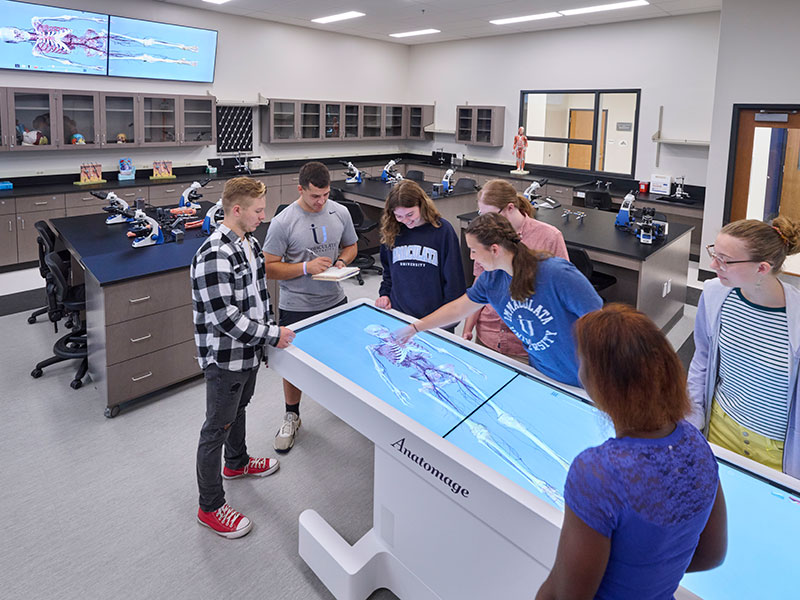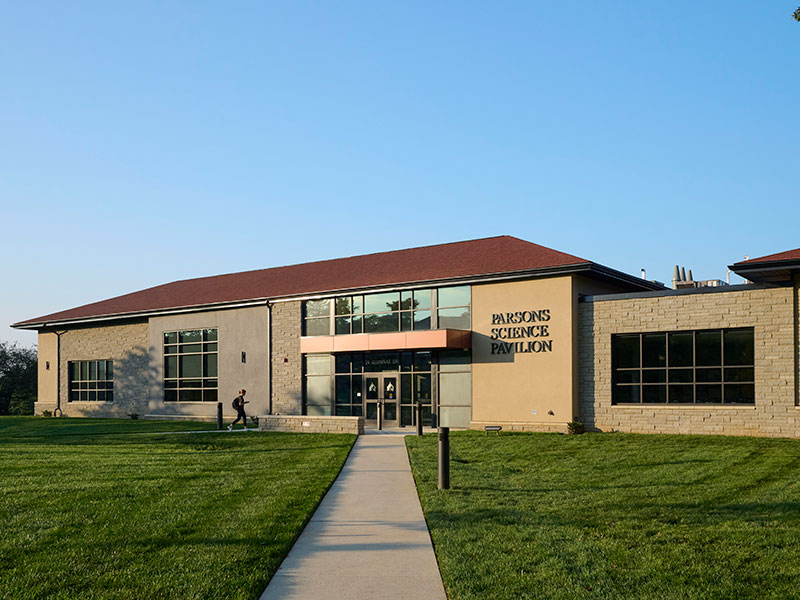Parsons Science Pavilion
Immaculata’s new Parsons Science Pavilion offers top-notch laboratories and equipment for exploring scientific concepts, conducting experiments and gaining research experience with faculty mentorship. You have access to modern learning spaces dedicated to general biology, anatomy and physiology, and environmental biology and ecology.
Anatomage Table: A Powerful Tool for Learning Anatomy
Study anatomy and physiology through high-resolution images on Immaculata’s Anatomage Table, an advanced 3-D anatomy visualization system used by many leading medical schools. The table enables you to participate in lab activities, such as exploring organ systems or conducting virtual cadaver dissections. You can also explore the digital image library of human and animal bodies through an interactive, life-sized touch screen.
Viewing detailed physical structures from all angles gives you an accurate understanding of anatomy. See relationships between each organ system and visualize organs and tissues, down to individual vascular structures. You can also examine anatomical variations among different clinical cases, observe more than 1,000 pathological examples, and visualize physiological processes, such as the heart pumping of the heart.
Whether you are studying a health care discipline, biology or pre-veterinary science, the Anatomage Table engages you in experiential learning and gives you a rich understanding of bodily structures and systems.
Additional Chemistry and Biology Instrumentation
Gain experience working with instruments scientists regularly use, such as:
- High-performance liquid chromatography (HPLC) system attached to a mass spectrometer (MS)—Used for determining the purity and mass of chemical compounds.
- Isothermal gas chromatograph (GC)—Employed to find out the number of compounds present and the relative percentage of each.
- Mid-infrared FTIR spectrometer—Helps uncover structural components of a compound.
- Nuclear magnetic resonance (NMR) spectrometer—Provides structural analysis of organic and biological compounds.
- Raman spectrometer—Aids in the determination of structural components of compounds.
- Ultraviolet-visible spectrophotometer—Indicates the amount of compound present in a solution, especially if it has a color associated with it.
- Polarimeter—Helps reveal the purity of compounds that can exist in left- or right-handed forms.
- Probes and sensors including pH, cyclic voltammetry and fluorescence—Allow for automated data collection and interpretation without the need for continual temperature monitoring.
- Microplate absorbance reader—Used to determine concentrations of chemical reactions on a very small scale.
- Transilluminator—A specialized light box to display specifically stained chemicals.
- Refrigerated incubator/shaker—Allows temperature-controlled constant stirring of various solutions.
- PCR (polymerase chain reaction) machines—Amplify small amounts of DNA so they can be analyzed.

